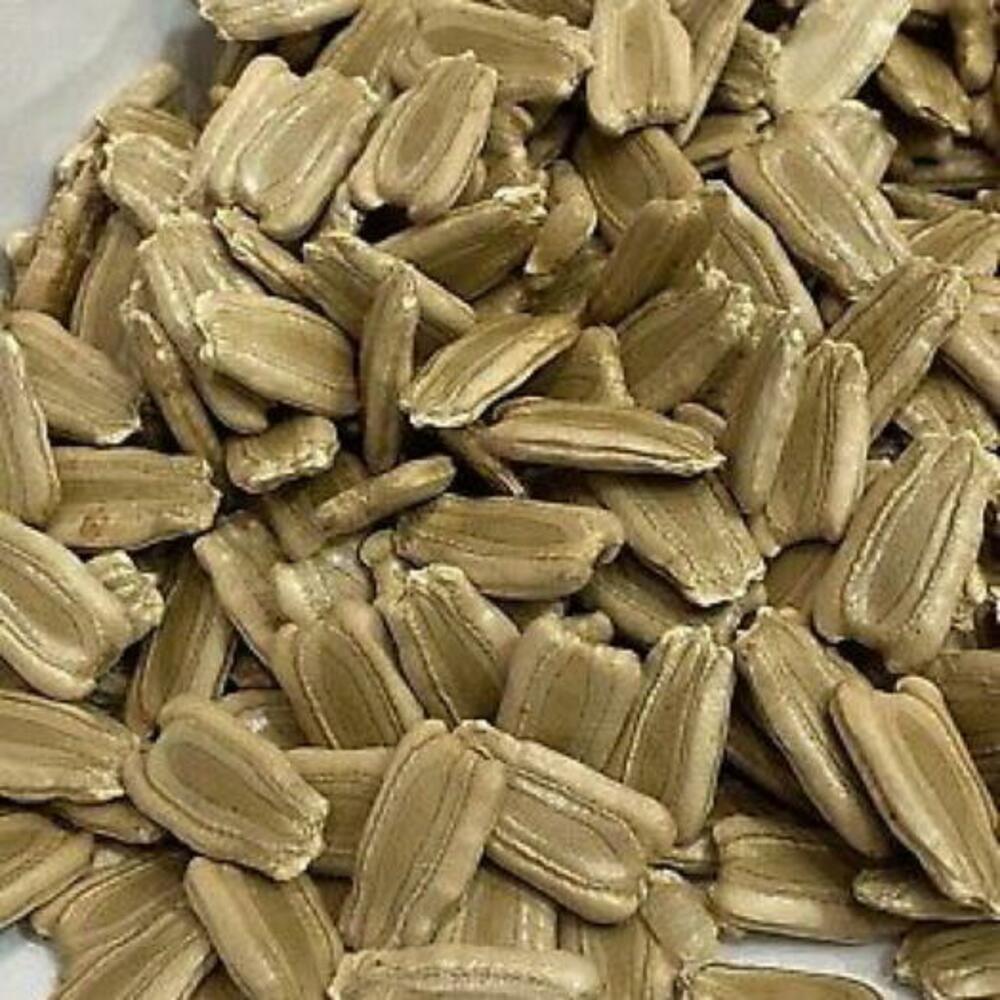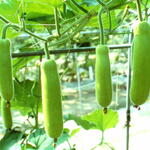Indian, Bangladeshi Bottle Gourd Seeds - Dhoodi, Lauki Seeds 100% High Best Quality Seeds Quick Grow Easy to Plant Much Better Quality Seeds Than All Others In The Market Well Packaging Quantity: 10 Fresh and Finest Seeds *How to Sow Seeds - 10 Easy Steps!* 1. Find some trays or pots 2. Fill the seed tray with seed compost (seed starting potting mix) 3. Moisten the surface of the compost 4. Sprinkle the seeds evenly over the compost 5. Cover the seed 6. TrayPlace the seed tray in a warm place 7. Uncover the seedlings once they germinate 8. Transplant the seedlings 9. Keep transplanted seedlings in the shade 10. Plant out into the flowering position and enjoy! *Germination Time:* - 21 to 28 days minimum to germinate . though some varieties can take longer. - Medium Watering / if possible everyday - Keep the soil moist at all time - Find the best place where you get partial shade or full sun Note: 1 You will receive 10 seeds in a see-through clear grip lock bag with the item name on the label inside. Note: 2 Please remember that seeds are living things and there are many factors that can affect your growing success. We do everything to ensure you receive quality seeds.
Рекомендації по догляду
10 Easy Steps To Start Your Own Vegetable Garden There are many reasons why people from different walks of life grow their own vegetables: it’s fun, rewarding, you get to eat the freshest produce possible and it is economical. If your dream is to have your own vegetable garden, eat fresh produce and save money, read our top tips for getting started: 1. Pick The Right Location: ● Choose a location with enough sun. Most vegetables need at least 6 to 8 hours a day. ● The location should have enough space and be level, to help prevent erosion. ● Pick a location that is close to a water source. ● Plant in moist, well-drained soil. ● Plant in a secure environment that is sheltered from strong winds and traffic. ● If possible, plant in raised beds. 2. Choose The Right Vegetables ● Choose what vegetables to plant based on your region, climate and the season. ● Plant what you and your family like to eat. ● Consider the amount of space you have when choosing vegetables to plant. ● Beginners should consider planting easy-to-grow crops like peppers, cucumbers, carrots, beans, lettuce, Swiss chard, cabbage, tomatoes, squashes and radishes. ● Border your vegetable garden with some marigolds or parsley to discourage pests. 3. Prepare The Soil ● Mix compost, organic fertiliser and manure into your vegetable garden. ● Alternatively, purchase ready-made soil. 4. When To Plant ● Planting dates can be found on seed packets ● Consider the ideal planting conditions for each vegetable you want to plant. Each crop has different growing conditions and ripening cycles based on weather and temperature preferences. 5. Planting ● Sow your seeds or plant your seedlings in the soil, carefully following the instructions on spacing and depth. ● When transplanting seedlings, ensure holes are bigger than the existing root ball. This will make it easier for the new roots to grow and helps your plant to get established more quickly. 6. Water Well ● Spray the vegetable garden with water to keep the soil evenly moist. Most plants need on average 2 – 5cm of water a week. ● In warmer areas, you will need more water. ● Water the garden heavily once a week instead of a little every day. It forces the roots to reach further into the soil to seek moisture, improving self-sufficiency. ● Use a spray nozzle on your hose to gently spray your garden. 7. Act Quickly And Keep Out The Weeds ● Remove weeds as soon as you can so they do not spread. To do so, grab them low on the stems to remove the entire root. ● Mulch is an effective way to prevent weeds from growing, as well as improving your soil. Add a layer of mulch about 5 – 10cm thick. 8. Continuously Harvest ● Some vegetables should be picked regularly to keep the harvest coming. ● Remove old blooms, also known as ‘deadheading’, to encourage new growth. ● Plant crops in succession as the season changes. 9. Fertilise The Soil ● Add organic fertiliser whenever you can, but at least once a year. This can be done by placing the fertiliser on the surface of the soil. ● Fertilising helps to improve the structure of the soil as well as drainage, and creates a healthy environment for roots. 10. Keep Good Records ● Keep track of everything that was grown. ● Note any pests, diseases or failures. ● Notes help you avoid making the same mistakes again. ● You can build up a personal record of what works best for you and your garden.
Товар тимчасово відсутній
Asian, Bangladeshi BOTTLE GOURD Seeds - Dhoodi, Lauki, Pani Kodu - 10 Seeds (UK Seller)
Indian, Bangladeshi Bottle Gourd Seeds - Dhoodi, Lauki Seeds 100% High Best Quality Seeds Quick Grow Easy to Plant Much Better Quality Seeds Than All Others In The Market Well Packaging Quantity: 10 Fresh and Finest Seeds *How to Sow Seeds - 10 Easy Steps!* 1. Find some trays or pots 2. Fill the seed tray with seed compost (seed starting potting mix) 3. Moisten the surface of the compost 4. Sprinkle the seeds evenly over the compost 5. Cover the seed 6. TrayPlace the seed tray in a warm place 7. Uncover the seedlings once they germinate 8. Transplant the seedlings 9. Keep transplanted seedlings in the shade 10. Plant out into the flowering position and enjoy! *Germination Time:* - 21 to 28 days minimum to germinate . though some varieties can take longer. - Medium Watering / if possible everyday - Keep the soil moist at all time - Find the best place where you get partial shade or full sun Note: 1 You will receive 10 seeds in a see-through clear grip lock bag with the item name on the label inside. Note: 2 Please remember that seeds are living things and there are many factors that can affect your growing success. We do everything to ensure you receive quality seeds.
Рекомендації по догляду
10 Easy Steps To Start Your Own Vegetable Garden There are many reasons why people from different walks of life grow their own vegetables: it’s fun, rewarding, you get to eat the freshest produce possible and it is economical. If your dream is to have your own vegetable garden, eat fresh produce and save money, read our top tips for getting started: 1. Pick The Right Location: ● Choose a location with enough sun. Most vegetables need at least 6 to 8 hours a day. ● The location should have enough space and be level, to help prevent erosion. ● Pick a location that is close to a water source. ● Plant in moist, well-drained soil. ● Plant in a secure environment that is sheltered from strong winds and traffic. ● If possible, plant in raised beds. 2. Choose The Right Vegetables ● Choose what vegetables to plant based on your region, climate and the season. ● Plant what you and your family like to eat. ● Consider the amount of space you have when choosing vegetables to plant. ● Beginners should consider planting easy-to-grow crops like peppers, cucumbers, carrots, beans, lettuce, Swiss chard, cabbage, tomatoes, squashes and radishes. ● Border your vegetable garden with some marigolds or parsley to discourage pests. 3. Prepare The Soil ● Mix compost, organic fertiliser and manure into your vegetable garden. ● Alternatively, purchase ready-made soil. 4. When To Plant ● Planting dates can be found on seed packets ● Consider the ideal planting conditions for each vegetable you want to plant. Each crop has different growing conditions and ripening cycles based on weather and temperature preferences. 5. Planting ● Sow your seeds or plant your seedlings in the soil, carefully following the instructions on spacing and depth. ● When transplanting seedlings, ensure holes are bigger than the existing root ball. This will make it easier for the new roots to grow and helps your plant to get established more quickly. 6. Water Well ● Spray the vegetable garden with water to keep the soil evenly moist. Most plants need on average 2 – 5cm of water a week. ● In warmer areas, you will need more water. ● Water the garden heavily once a week instead of a little every day. It forces the roots to reach further into the soil to seek moisture, improving self-sufficiency. ● Use a spray nozzle on your hose to gently spray your garden. 7. Act Quickly And Keep Out The Weeds ● Remove weeds as soon as you can so they do not spread. To do so, grab them low on the stems to remove the entire root. ● Mulch is an effective way to prevent weeds from growing, as well as improving your soil. Add a layer of mulch about 5 – 10cm thick. 8. Continuously Harvest ● Some vegetables should be picked regularly to keep the harvest coming. ● Remove old blooms, also known as ‘deadheading’, to encourage new growth. ● Plant crops in succession as the season changes. 9. Fertilise The Soil ● Add organic fertiliser whenever you can, but at least once a year. This can be done by placing the fertiliser on the surface of the soil. ● Fertilising helps to improve the structure of the soil as well as drainage, and creates a healthy environment for roots. 10. Keep Good Records ● Keep track of everything that was grown. ● Note any pests, diseases or failures. ● Notes help you avoid making the same mistakes again. ● You can build up a personal record of what works best for you and your garden.
Поскаржитись на товар







